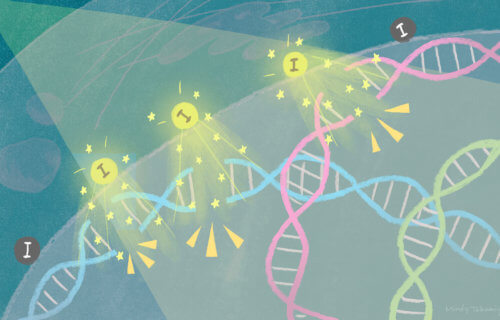KYOTO, Japan — A new age of cancer treatment could be on the horizon after scientists say they successfully used X-rays to kill tumor cells. Their new study finds shining these rays on tumors that have been fed iodine nanoparticles releases electrons that break the cancer’s DNA.
The technique uses quantum physics, first described by Albert Einstein in 1905, in which exposing metal to light releases electrons. The cancer cells die as the “Trojan Horse” iodine delivered to the cells releases electrons when hit by specially tuned monochromatic X-rays.
Conventional radiation therapies employ polychromatic X-rays, consisting of various energy levels, with low-energy rays failing to penetrate the body’s surface. The researchers say monochromatic X-rays, on the other hand, could be precisely tuned to the right level that could trigger this releasing of electrons inside the tumors and killing them.
So how long does it take the treatment to work?
To achieve this, the scientists used specially designed silica nanoparticles loaded with iodine. The cancer cells effectively consumed the particles after one day of incubation. Study authors then fired X-rays at 33.2 kiloelectron volts at the cancerous cells for 20 minutes. The process completely destroyed the cancer cells three days following irradiation.
Researchers originally designed his process with gadolinium but discovered that iodine is cheaper and releases electrons at a lower energy level for a shorter period of time. The team is now going to test the technique using nanoparticles in mouse models of cancer.
“Exposing a metal to light leads to the release of electrons, a phenomenon called the photoelectric effect,” says Dr. Fuyuhiko Tamanoi of Kyoto University in a release. “An explanation of this phenomenon by Albert Einstein in 1905 heralded the birth of quantum physics. Our research provides evidence that suggests it is possible to reproduce this effect inside cancer cells.”
“Our study represents an important example of employing a quantum physics phenomenon inside a cancer cell,” Associate Professor Kotaro Matsumoto adds. “It appears that a cloud of low-energy electrons is generated close to DNA, causing double strand breaks that are difficult to repair, eventually leading to programmed cell death.”
The findings appear in the journal Scientific Reports.
SWNS writer Joe Morgan contributed to this report.
